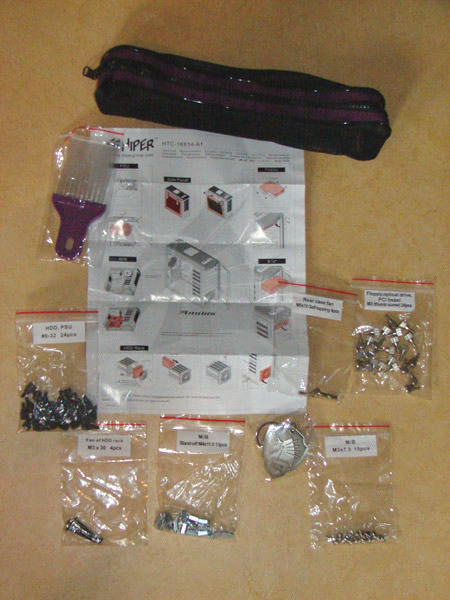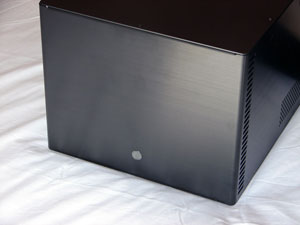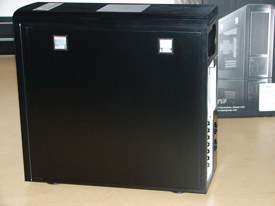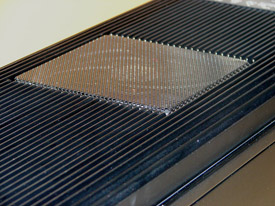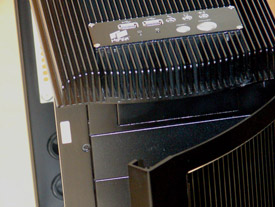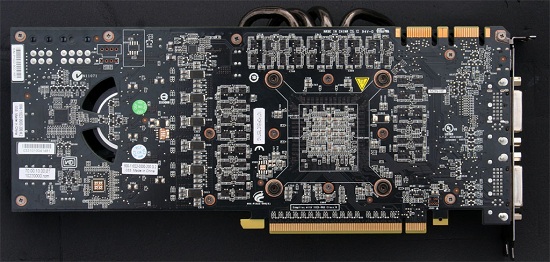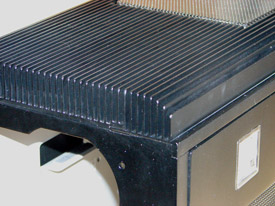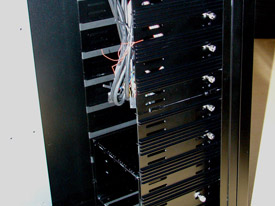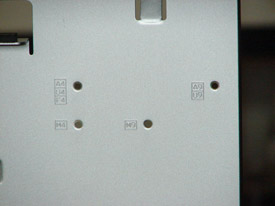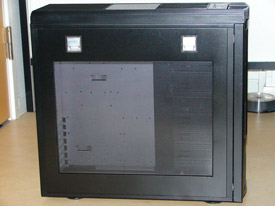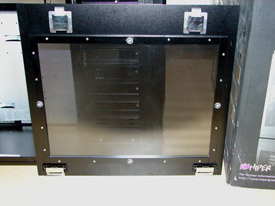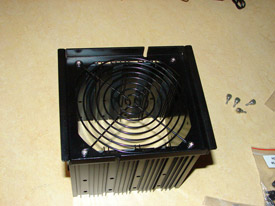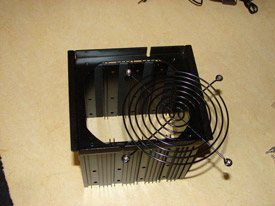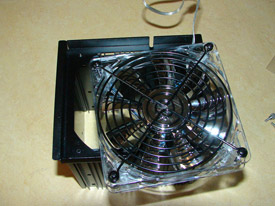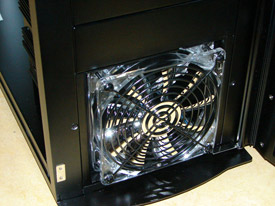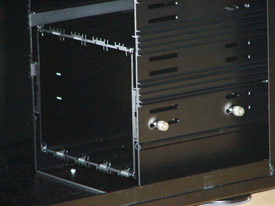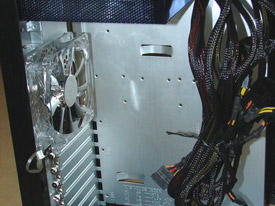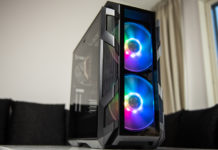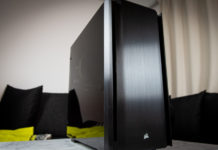Hiper Anubis may look a bit strange at first. It’s doesn’t look like your average case, but is that necessarily a bad thing? We take a closer look at Hiper Anubis to see what it sports and if it’s worth the money.
Editor’s note: Updated with more information on the rubber suspension system
Hiper is best known for its power supplies, but has been expanding into new markets for the last year or so. Keyboards, fans and lately also cases. Anubis is Hiper’s first attempt to design a case, and with the competition there is today, we have to say it’s pretty bold to even try. Especially as Hiper isn’t aiming for the generic crowd looking for just any case, but the high-end users.
Over the last couple of years, cases have been evolving like crazy. Many companies are now offering cases with a lot of clever features, but few are complete. Some are too far out, some could’ve used some more work, some are simply hideous. Some are just way too expensive, and some are simply lacking quality or distinguishing features. Hiper has attempted to avoid all of these traps, and here we will see if they’ve succeeded in doing so.
At a first glance, Anubis does look like something out of the ordinary. In fact, already when handling the box it comes in, which has a convenient carrier handle, you sense that this is not your ordinary case. When you open up and see the case with your own eyes you get caught in the moment by the design.
Today we will take a closer look at the Anubis case from Hiper.
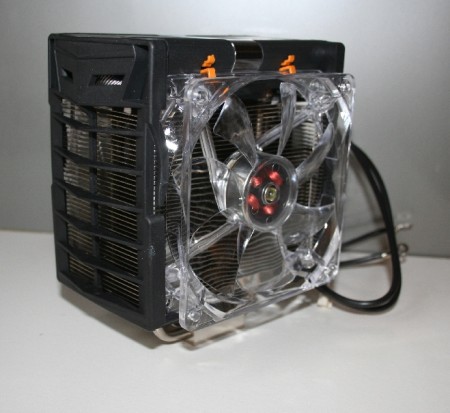 |
|
|
Hiper Anubis
|
|
| Case: | Miditower |
| Side panel: | Mesh |
| Measurements (HxWxD): | 52.2cm x 20.2cm x 47.5cm 20.6″ x 8.0″ x 18.7″ |
| Weight: | 23.6 lbs / 10.7kg |
| Motherboard support : | mATX, ATX, FlexATX, ITX |
| Cooling (fans): | Rear – 80/92120 mm (not included) Roof – 120 mm Front – 120 mm (not included) |
| Material: | 6063-T5 alloy (76% aluminum) |
| Internal units: | 4×3,5” |
| External units: | 6×5.25” 1×3.5” |
| Expansion slots: | 7 |
| Power supply | – |
| Other: | Detachable harddrive bay 2xUSB, mic, line in, and headphone connectors on top Travel PAK Cleaning brush Tons of screws Holes for drawing water tubes through Manual Anubis key ring Tool-free removal of side panels Overall tool-free design EMI proof |
| Price: | $200 |
The specifications doesn’t really stand out. The number of 3.5″ and 5.25 bays are completely average, four and six respectively. However, the overall design does. The interior may not be as revolutionary as the two-chamber design many companies have adopted, but Anubis is smaller than these cases. It has a rigid frame, but is still far from as heavy as many other cases, mainly thanks to the use of aluminum. It’s quite thick aluminum too. Luckily there is not much plastic, even the entire door is made from the same material as the rest of the case. The only place where we can find plastic is the hub on the top of the case where the USB, headphone and mic ports are, but that’s OK.
The number of fans is sufficient. Since this is a miditower; one in the front, one in the back and one in the roof is the perfect amount. The only fan included with the case is seated in the roof and measures 120mm. We had dig around to find the specifications for it, but you can find them in the table below. It’s made by Young Lin Tech Co, Ltd. and is a very common fan for cooling manufacturers to rebrand and sell as their own. Unfortunately, it’s no the quietest of fans when it comes with just a 4-pin molex connector. We’re not sure though, but it seems that some cases comes with a fan that has a 3-pin connector instead. We do not recommend you to use the fan with the default 12V, but reduce it to 7 or 5V for the best possible noise/cooling ratio.
|
DFS122512L
|
|||
|
RPM
|
Airflow (CFM)
|
Noise (dB(A))
|
Power (W)
|
|
1,600
|
60.09
|
27.92
|
2.2
|
The side panel is not a window, nor is it solid metal, it’s a mesh net with a window behind it. Just a mesh net would’ve resulted in far too much noise escaping, but thanks to the window, you don’t have to worry about that. The mechanism for removing the side panels is some of the ingenious we’ve seen. The locks and spring-loaded catchers are not only functional but fit with the overall design as well. Instead of having to unscrew two or three screws and then slide the panel off, you can just push down the locks, lean the panel out and lift. It’s as convenient as it can get.
|
Brush, tons of screws, manual
|
This is by far the largest amounts of screws we’ve ever encountered. Hiper has been extremely generous, in more than one way, because they are not just regular screws, but thumb screws. Hiper has been working hard on designing a tool-free case, and it shows. The manual is a bit short though, a single page, which you can flip over to find some warranty information and specifications. But in Hiper’s defense, there’s a lot of information on that single page. Pretty much everything you need to know on how to install the various components of a computer.
In my opinion, Hiper Anubis is a neat-looking case with some designer touches, and an overall raw look. It’s not as neutral as perhaps the Antec Performance One or Lian-Li cases, but it’s playing in the same league. The door is made from the same metal as the rest of the case and very sturdy. It opens to about 90 degrees and when you close it, it stays shut thanks to two strong magnets. The fit could perhaps be a bit better though, it’s a bit tight. The case is dull black with chrome-like details, which adds a luxurious touch. Even the interior is painted black, which adds to the overall impression. A quality touch.
Somehow, I really like the raw look. It’s polished, but the fins resembling a heatsink on the top and the metal stripes in the door makes it look a bit like beast. A beast in a tuxedo. The chrome-like details stands out a bit, but not too much. Just a nice touch. Dust will collect between the fins, but that’s what the brush is for.
As mentioned above, the door has metal stripes which resembles the fins on the top of the case. They are just not ornamental but let air pass through. Beneath the vertical stripes you can see a square mesh net for the 120mm fan that can be fitted to the harddrive bay. If you look closely at the mesh you will see a Hiper logo. A nice little detail by Hiper.
On the top there is another mesh net for the 120mm fan and the panel with audio and USB connectors. This more or less forces the user to put Anubis on the floor. The LEDs and panel with connectors would be pretty hard to use when having the case on your desk. eSATA and Firewire would’ve been nice too, especially the former, but overall USB should do.
The back of the case reveals two holes for pulling water cooling tubes through and the mounting bracket for the fan. You can fit either a 80mm, 92mm or a 120mm fan here. Thankfully, the screw holes in the fan mounting bracket are designed so that the screws screw into the bracket first and then the fan. This makes it easier to install the fan.
At the top of the case we have the hole and bracket for where the power supply goes. The installation of the power supply is quite simple. The support bracket holds it in place while you fasten it with the supplied thumb screws.
We’ve seen the holes for pulling water cooling tubes with a couple of other cases, and they are good to have, just not as extraordinary as they once were. Hiper has used solid brackets to cover the expansion slots, which in a relatively small case like this should help steering the air flow from the lower front to the upper rear. Instead of the holed ones some manufacturers use.
The internal design is pretty standard, but Hiper has found a number of ways to improve the layout. The removable harddrive bay is of course a big plus and you can quite easily fit it with a 120mm fan for additional cooling. Not something Hiper has come up with, but still something we like.
There are more things than the removable bay. If you read the specifications table, you probably noticed that Anubis supports both FlexATX and ITX, beside the default ATX and mATX support. This has resulted in a lot more screw holes in the motherboard tray, but don’t worry, Hiper has marked the tray carefully and installing any motherboard of the four different standards is done with ease thanks to the easy-to-read etchings.
We already discussed the fan back on page, but here we have the version with a regular 4-pin molex connector.
Since there is only one fan shipped with the case, it might be asking a bit too much, but we would’ve liked some re-usable dust filters.
The side panel is solid, but looks like a mesh net. The plexiglass window behind it blocks both noise and air from escaping. The look fits with the rest of the case, but has little function. If you want you can always remove the 16 screws holding the plastic window in place, but this will void the warranty. On the upper right picture you see the locks and the spring-loaded catchers. A pretty ingenious design, we hope to see more of.
Here you see the harddrive cage removed from its position in the lower front of the case. It’s locked in place by four thumb screws. We’ve mounted a 120mm fan using four extra long screws (supplied). They pass through the fan and screws into the holes that held the grid in place. The harddrive bay slides in and out with little resistance, and so does the harddrives. .
The harddrive bay does have rubber suspensions, but they are designed a bit oddly. They are not between the bay and the drive, I.e. the screws do not pass through them, but rather on the side of the holes, at the same height as the metal.
We would like to see some for the optical drives and more for the power supply to reduce vibrations. The support bracket for the power supply does have a rubber pad, but there is no rubber between the back of the case and the power supply. Easily solved with some rubber wafers though.
Cable management can be a bit tricky, since the power supply is seated directly above the motherboard and there is no way to hide the cables behind the tray, you have to be creative. Although, there is room to hide excess cables behind the right side panel and the 5.25″ devices. I.e. if you don’t have a modular power supply.
What can we say about the Anubis? I believe Hiper wanted to design a case that stands out, but not too much. It has. The build quality is extraordinary. The feeling is robust and the use of metal all the way adds a touch of quality. It’s a miditower in every way. The size is average, but it’s big enough to feel roomy when you’re installing your components. It’s easy to move around, but still steady where it stands. It’s simply a miditower the way a miditower is suppose to be.
Cooling
The cooling potential is more than sufficient, but we don’t like the fan they’ve installed in the roof of the case. Sending along more fans would’ve pushed up the price too much, but that is also what makes us wonder why they’ve included this one. Hiper should go with a lower-RPM model at least.
The use of 120mm fans throughout the case is of course good, and that the rear bracket also accepts 80 and 92mm fans is a plus. Overall, I would say that the case has excellent cooling potential, not just because of the fans but also the build material. The fans are located where they are supposed to and all brackets are for 120mm fans.
Design and layout
The overall layout of the case is not very different from most most other miditowers, but thanks to Hiper’s special touches it still stands out, and it works. The fan installations are easy, installing harddrives and optical drives is done with ease. The power supply uses the same thumb screws as the harddrives. It’s a piece of cake to install components in Anubis. Getting components in and out is even easier thanks to the innovative side panel construction.
Anubis is black, all black, even the inside, and sports some very raw fins mixed with some elegant touches. The hub on the top with audio and USB ports is easy to access if you have the case on the floor. The door is sturdy and stays shut when closed. No glitches. The water tube holes is a plus and the solid brackets should help steer the airflow in the right direction.
Conclusion
Anubis is close to entirely tool-free. It has a unique design and a couple of tweaks that we really like (the side panel design is something I hope others take after). It’s simply a very good case. Hiper has done its homework. The only real con is the price, which is a bit high for a case without a power supply, but considering what you get I still wouldn’t call it expensive. Just the build material alone, is worth an extra buck or two.
 |
|
Hiper Anubis
|
|
Pros Cons |
Hiper Anubis is a great case and we can wholeheartedly recommend it.

We want to thank Hiper for sending the case for review.




